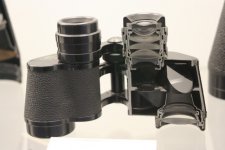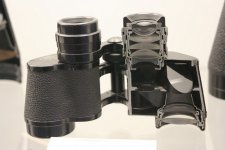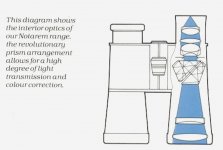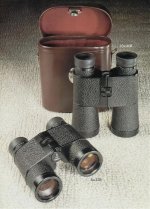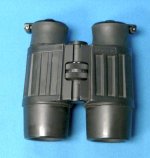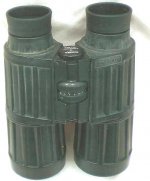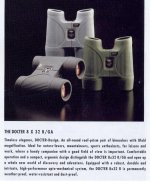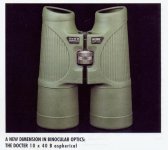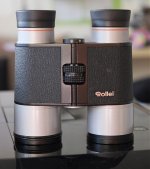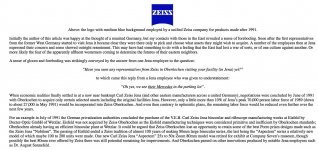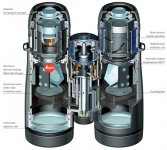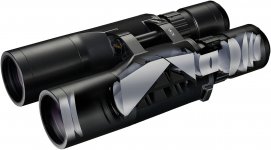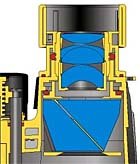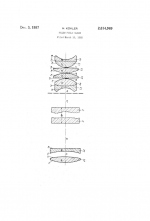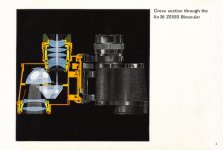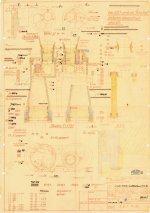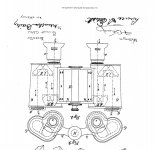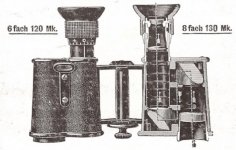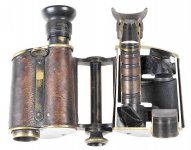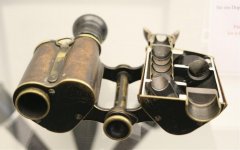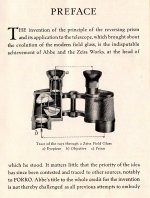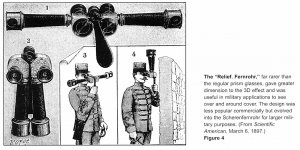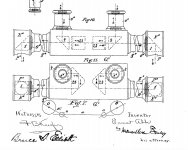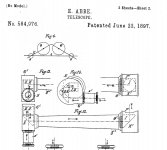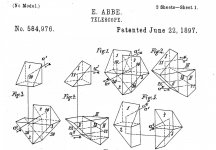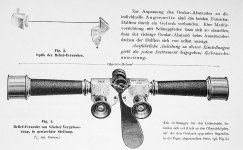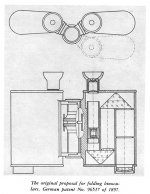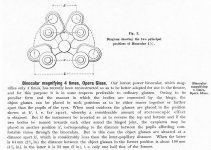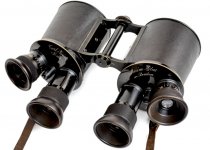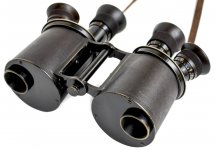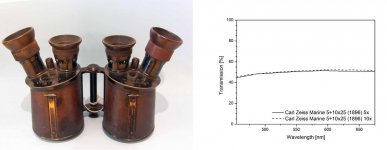Earliest Porro Prism Designs
I’ve been occupied with a number of matters for the last couple of weeks, but now have a chance to finish posting on the optical construction of Zeiss binoculars. So . . .
While Zeiss commercially introduced Porro prism binoculars in 1894, it was not the first to use Porro prisms in either binoculars or other optics
e.g. see a short history of prisms in binoculars starting from post #28 at:
https://www.birdforum.net/showthread.php?t=378895&page=2
By 1894, the basic optical designs for both objectives and eyepieces were well established
The main limitation was, that as there is up to 4% light loss by reflection from each uncoated glass surface, designs tended to minimise the number of seperate glasses in optical devices
i.e. to balance a sufficiently bright image against better optical performance
(it was not until after WWII, with the widespread adoption of single layer lens coatings that reduced reflection to around 1% per surface, that more complex designs were increasingly practical)
Available Images
While there are only a limited number of images showing the optical construction of early models, they do include some very early examples:
- a cross-section from the original patent, see:
https://www.birdforum.net/showpost.php?p=3914041&postcount=30
- a drawn cut away image from an early advert (from before 1900?), and
- two photos of a cut away 8x20 unit dating from 1896. The first is from Zeiss at:
https://www.zeiss.com/corporate/int/about-zeiss/history/technological-milestones/binoculars.html ,
and the second from:
http://onlyzeiss3.web.fc2.com/rep-yukari/rep-z06obk_opt03.htm
The 8x20 binocular appears to be the same one that’s on the cover of the Spring 1990 issue of the Zeiss Historica journal, see:
https://issuu.com/zeisshistoricasociety/docs/pdf-zhs-journal-spring-1990
n.b. there is a particularly clear photo of another early cut away unit at Alamy but it requires payment for use, see:
https://www.alamy.com/stock-photo-cross-section-detail-of-a-pair-of-1930-binoculars-29842518.html
- - - -
In addition, for both more detailed images and explanation of the construction of some very early Zeiss Porros, see both:
- a 3x18 unit #53 at the Vacani’s website:
http://www.binoculars-cinecollectors.com/html/body_unusual-optics.html , and
- a 6x15 unit #306 and an 8x20 #4,976, in the paper ‘300 Year Quest for Binoculars’ by Greivenkamp and Steed at:
http://fp.optics.arizona.edu/antiques/Quest for Binocs - SPIE.pdf
Optical Details
In general, the earliest Zeiss Porro prism binoculars follow a simple pattern of:
- a cemented doublet objective (2 glasses in 1 group)
- a single field lens and a cemented doublet eye lens for the eyepiece (3 in 2), and
- two seperate Porro Type I prisms (2 in 2)
So as there 5 groups and therefore 10 surfaces, there was potentially a 40% loss of light transmission due to reflection alone
[EDIT: Binastro quite rightly addresses this oversimplification in the next post. However, bearing in mind all of B's comments,
also see Gijs' measurement of the performance of an uncoated Marine Glas from 1896 in post #80]
What’s most interesting is that the while the binoculars use Porro Type I prisms, the prism pairs are spaced as far apart as the housing allows (as in the original 1893 patent image)
Greivenkamp and Steed note that the separation of the prisms in the 6x15 model is 20mm (0.8”), and in the 8x20 model 30mm (1.2”)
As can be seen from the images there are extensive efforts to control stray light:
- all of the internal surfaces are blackened
- the sides of the prisms also seem to have been blackened, and
- there is a tube with interior baffles, that connects the eyepiece to the eyepiece prism
In addition, on at least some models, the objective lenses are so deeply recessed in the housing, so as to be behind the front prism
An Exception
The very early unit #53 shown on the Vacani’s site is atypical in several ways, including:
- the objectives comprise 4 elements in 2 groups (to minimise image distortion), and
- there is an additional tube connecting the objective to the objective prism (a stray light control measure)
That Zeiss experimented with different approaches so early on, is of course not surprising
Adoption of Conventional Porro Prism Arrangement?
What’s not clear from the available information, is when Zeiss adopted the now usual practice of placing the two Porro Type I prisms in close proximity,
as shown with the 8x30 Deltrintem in post #5 at the start of this thread
Most detailed information about early Zeiss binoculars concerns externally identifiable model variations, rather than the optical aspects
However, the use of relatively widely separated prism pairs continued on at least some established Zeiss designs for a considerable time
e.g. a cut away image of the 6x Telex model (introduced in 1907), which shows significant prism separation, was still in Zeiss catalogues until at least 1928 (see a clear image from a 1923 catalogue)
- - - -
And for those interested in historical context:
The maximum separation of prisms was used by Ignazio Porro in the monoculars that he had the firm Hoffman make for him in the 1860’s, see both:
- a cut away image of the Porro Type I model in post #28 at:
https://www.birdforum.net/showthread.php?p=3914037#post3914037 , and
- the construction of the much rarer Porro Type II model, at post #70 in the link
In contrast, the images of the binoculars of both Boulanger (c.1859) and Nachet (c.1875), give the impression that the prisms were in close proximity, see post #29 of the link
And the cross-section of Abbe’s 1873 prototype monocular clearly shows the same, at post #30
- - - -
Additionally, early competitors to Zeiss such as both Goerz and Steinhall, also made Porro prism binoculars with widely spaced prism pairs
(but in contrast to Zeiss the objectives and eyepieces were vertically orientated, so as to avoid violating the 1893 Abbe patent for the enhanced stereoscopic effect achieved with outboard orientated objectives)
John




